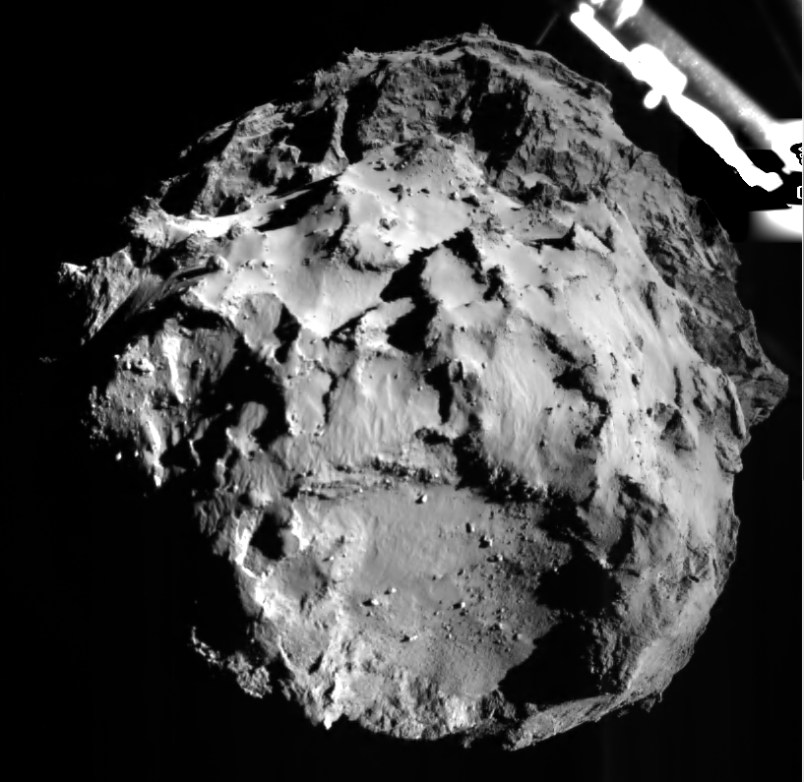Updated: November 13, 2014, 9:31 AM
BERLIN (AP) — Europe’s comet lander Philae has come to rest in the shadow of a cliff, posing a potential problem for its solar panels, scientists from the European Space Agency said Thursday as they published its first image from the surface of a comet.
The photo sent back to Earth shows a rocky surface, with one of the lander’s three feet in the corner of the frame.
Philae is still stable despite a failure to latch on properly to the comet’s rocky terrain, mission scientist Jean-Pierre Bibring said, adding that it appears to be standing on just two of its three feet but its scientific instruments are operating normally.
The lander scored a historic first Wednesday, touching down on comet 67P/Churyumov-Gerasimenko after a decade-long, 6.4 billion-kilometer (4 billion-mile) journey through space aboard its mother ship, Rosetta. The cometis streaking through space at 41,000 mph (66,000 kph) some 311 million miles (500 million kilometers) from Earth.
Philae has enough power for about 64 hours and solar panels to extend that for an expected hour each day. Ground controllers are going to see whether it’s possible to adjust the lander to make sure its solar panels can catch the sun and charge its batteries, Bibring told reporters.
“We are just in the shadow of a cliff,” Bibring said, adding photos indicate the cliff could be just a few yards (meters) away. “We are in a shadow permanently, and that is part of the problem.”
“(Still) many of the other instruments have already acquired what they wanted to,” Bibring said. “A lot of science is getting covered now.”
Bibring said scientists would see what could be done to ensure the lander gets enough sun.
“We might try to better orientate the solar panels,” he said.
The lander’s harpoons, which were meant to anchor it to the surface of the comet, failed to deploy Wednesday, causing it to bounce twice before it came to rest on the comet’s 4 kilometer-wide body, or nucleus.
“Philae is stable, sitting on the nucleus and is producing data,” Gerhard Schwehm, a scientist on the Rosetta mission, told The Associated Press. “The lander is very healthy.”
Scientists are still analyzing what effect the two bounces had on the spacecraft. Communication with the lander is slow, with signals taking more than 28 minutes to travel between Earth and the Rosetta orbiter flying above thecomet.
Schwehm said it may still be possible to fire the lander’s harpoons but that this would be done only if it doesn’t imperil the spacecraft.
Another key question is whether Philae’s drill can be used to extract samples from beneath the comet’s surface without pushing the lander into space. Gravity on the comet is 1/100,000th that of Earth, meaning the washing machine-sized lander weighs just 1 gram (0.04 ounces) there.
Philae and Rosetta will use 21 instruments to analyze the comet over the coming months. Scientists hope the 1.3 billion euro ($1.6 billion) project will help them better understand comets and other celestial objects, as well as possibly answer questions about the origins of life on Earth.
Copyright 2014 The Associated Press. All rights reserved. This material may not be published, broadcast, rewritten or redistributed.







“On Comet
On Cupid
On Donner
On Blitzen”
Just in time for the Season of greedy.
Somebody watched PBS last night.